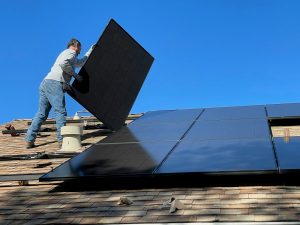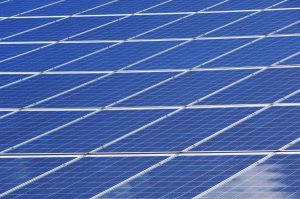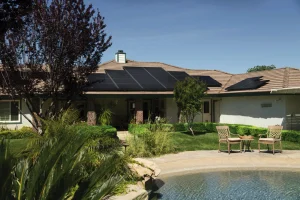Air conditioning is a necessary part of modern life, but it comes with a major drawback: it’s a major contributor to CO2 emissions and other pollutants. It also usually requires electricity, so if you’re living off grid it can be challenging.
Passive Cooling Strategies in Architecture
Natural Ventilation
Natural ventilation is a passive cooling strategy that utilizes openable windows and vents to take advantage of natural airflows to cool a building. It allows for a natural flow of air and reduces the need for mechanical cooling systems. One of the pros of this method is that it also helps to improve indoor air quality. However, it may not be effective in regions with high humidity or poor air quality.
Thermal Mass
Thermal mass is a passive cooling strategy that uses materials with high thermal mass, such as concrete, to absorb and store heat during the day, releasing it at night to cool the building. The heat absorbed during the day is released at night, creating a cooling effect. This strategy is effective in areas with high temperature fluctuation between day and night. However, it may not be effective in areas with little temperature fluctuation or regions with high humidity.
Green roofs
Green roofs are a passive cooling strategy that uses vegetation to insulate and cool a building by absorbing and evaporating water. This strategy helps to reduce the urban heat island effect, which is the phenomenon of urban areas being significantly hotter than rural areas. Green roofs also can help to reduce energy consumption and improve air quality. However, the cost of installation and maintenance can be high, and it may not be suitable for all types of buildings.
Shading
Shading is a passive cooling strategy that uses shading devices, such as overhangs or shading screens, to block the sun’s rays and reduce heat gain in a building. This strategy can help to reduce the need for mechanical cooling systems, and it can also improve the aesthetic of a building. However, shading devices may be costly and difficult to retrofit in existing buildings.
Passive Solar Design
Passive solar design is a passive cooling strategy that uses the principles of solar orientation, window placement, and thermal mass to harness the sun’s energy to heat and cool a building. This strategy can be effective in areas with a lot of sunlight and can help to reduce energy consumption. However, the design may not be suitable for all climates and may require a significant investment in the initial design and construction.
The Future of Cooling Your House Without Electricity
A team of researchers from the Massachusetts Institute of Technology (MIT) have come up with a new solution that they hope will help to break this cycle of dependence on air conditioning. They propose using aerogel, a substance that has been used for thousands of years, to stack cooling techniques and harness the power of thermodynamics to keep us cool.
According to the Clean Cooling Collaborative, 20% of the world’s electricity is spent on powering air conditioning and electric fans. As temperatures continue to rise, this usage is only going to increase, with the global number of AC units projected to triple by 2050. In addition to energy consumption, air conditioning is also a major contributor to CO2 emissions. Indirect CO2 emissions from cooling buildings more than doubled between 1990 and 2021, reaching about 1 Gt. Air conditioning also releases hydrofluorocarbon refrigerants (HFCs) which are thousands of times more potent as a greenhouse gas than CO2.
MIT’s solution is called ICER (Insulated Cooling with Evaporation and Radiation) and combines three different methods to keep buildings cool. The first is insulated cooling, which slows down the flow of heat from warmer areas to colder ones. The second is evaporative cooling, which uses the process of water absorbing heat to change from liquid to gas to lower the temperature of a surface. The third is radiative cooling, which is the loss of heat through thermal radiation, like when the Earth radiates heat out into space.
This three-pronged approach is unique in that it manages a building’s temperature without consuming electricity or producing carbon emissions. The design of the ICER system is similar to a solar panel, but instead of producing energy, it uses the sun’s rays to produce cooling.
In conclusion, air conditioning is a necessary part of modern life, but it comes with a major drawback. MIT’s new solution, the ICER system, is a promising development in the quest to reduce our reliance on air conditioning, and to lower the environmental impact of keeping cool. The ICER system is an innovative combination of insulated cooling, evaporation, and radiation, which manages a building’s temperature without consuming electricity or producing carbon emissions. It is a unique and sustainable way to keep cool, and it’s worth keeping an eye on as it develops.






